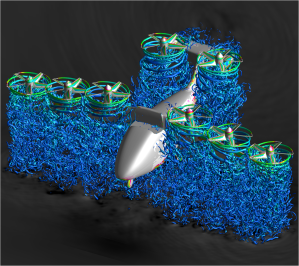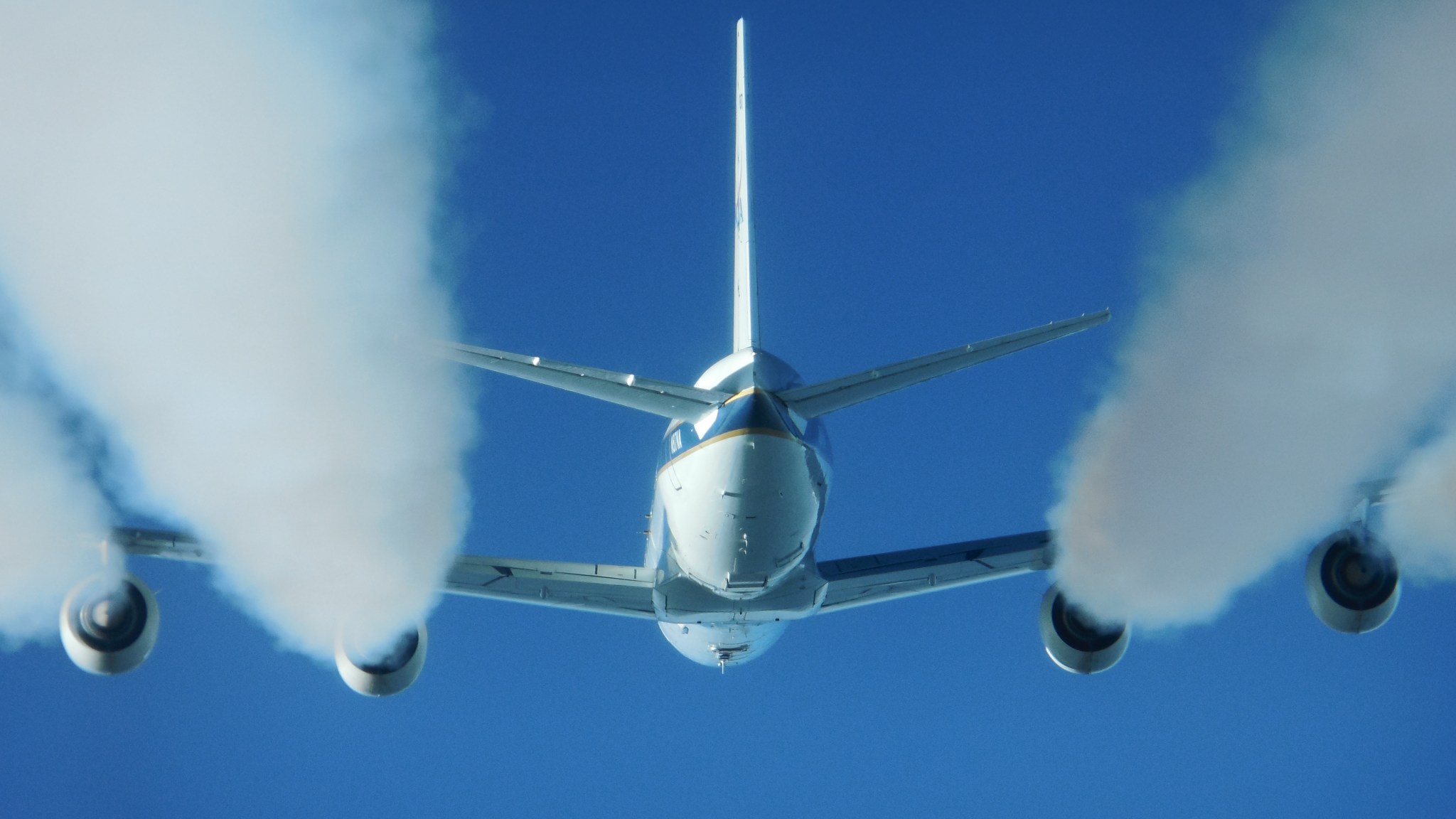
At times the view outside the cockpit window of the NASA Falcon HU-25 jet was nothing short of incredible.
Up ahead, about a football field length’s distance away, the agency’s DC-8 appeared to loom large in the windscreen, its four engines belching out exhaust and forming icy contrails that would stretch for miles over the California high desert before dissipating.
“You don’t normally fly this close behind an aircraft like that, but it was for a good reason,” said Bruce Anderson, a senior research scientist at NASA’s Langley Research Center in Virginia.
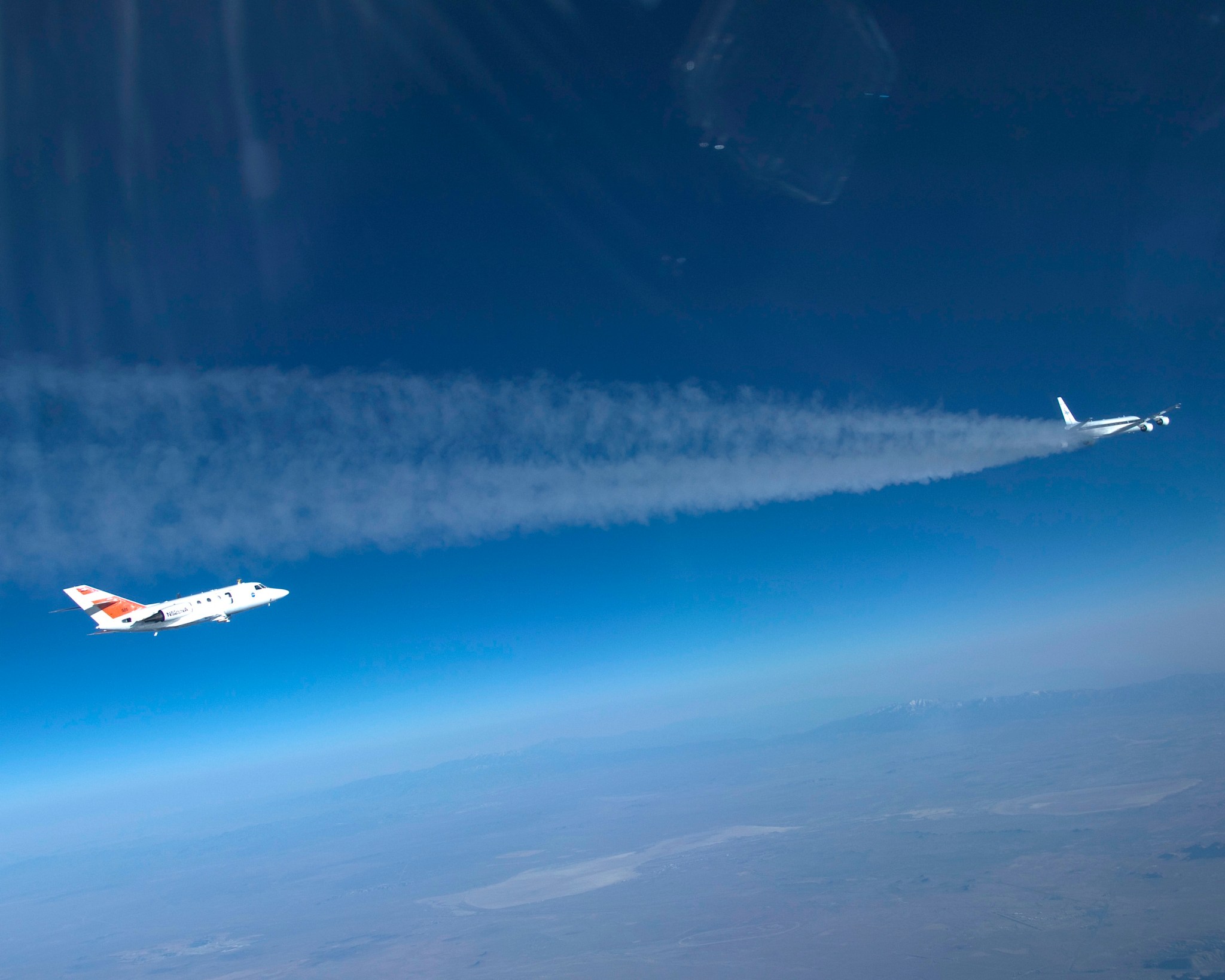
That reason is a NASA project to study the effects that burning an alternate biofuel has on engine performance, emissions and aircraft-generated contrails at altitude. The hope is that using alternate biofuels will be a safe and effective way to reduce aviation’s impact on the environment.
To help make that determination NASA’s aeronautical innovators recently took to the sky using the workhorse DC-8 and newer Falcon jet for some formation flying in which the distances between the two aircraft varied between 300 feet and ten miles.
In front was the DC-8, its tanks filled with either conventional JP-8 jet fuel, or a 50-50 blend of JP-8 and an alternative fuel of hydroprocessed esters and fatty acids that comes from camelina plants.
“Flower power is the way some of us like to describe this kind of alternate fuel,” Anderson said.
Either of the fuels, pure or blended, could be burned in any combination of the DC-8’s four, wing-mounted CFM56 jet engines at any time with just the throw of a few switches by the pilots.
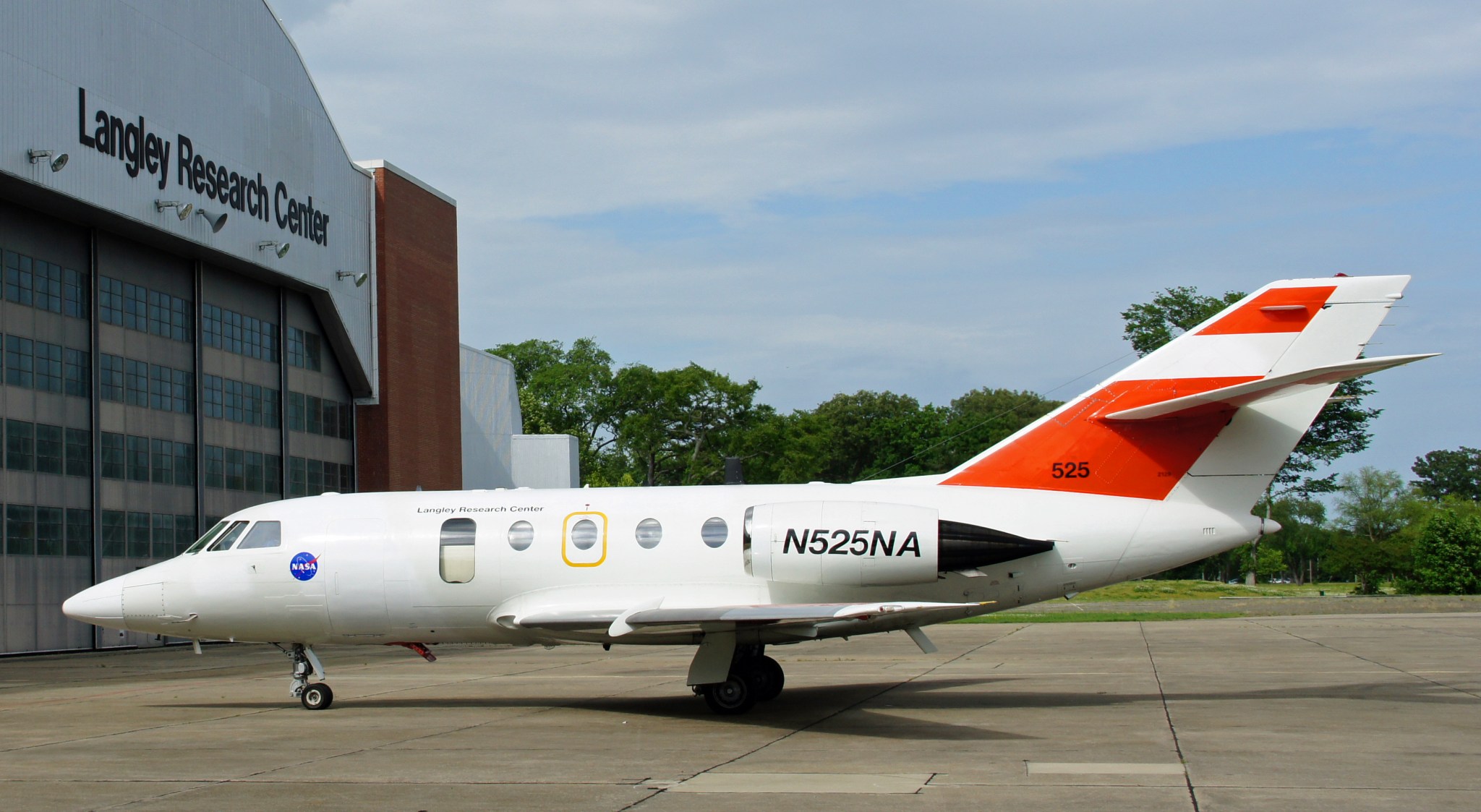
Flying behind was the Falcon jet, modified to carry a suite of some 20 scientific and navigation-related instruments that were designed to sniff out and record 20 different parameters of the exhaust coming from the DC-8 at various distances, altitudes and engine power settings.
During the month-long flight campaign that began Feb. 28, researchers recorded more than 15 hours of emissions sampling at cruise altitudes, and another almost four hours of sampling on the ground with the Falcon and an instrumented mobile laboratory parked behind the DC-8 as they sat on the airport tarmac.
“There were a few things that surprised us, but I think it went very well,” Anderson said. “All in all we developed a very effective method for sampling the exhaust behind the DC-8.”
Darting in and out of the DC-8’s wake, the ride inside the Falcon was, to put it mildly, a little bumpier than what typical airline passenger might experience. Keeping your seatbelts fastened at all times was more than just a good idea.
“It was kind of like riding down a washboard-rutted dirt road when we were in the exhaust,” said Anderson, who participated in all of the research flights aboard the Falcon. “We didn’t get into any real exciting turbulence, though. These planes are very tough and I never was concerned that we were doing anything unsafe.”
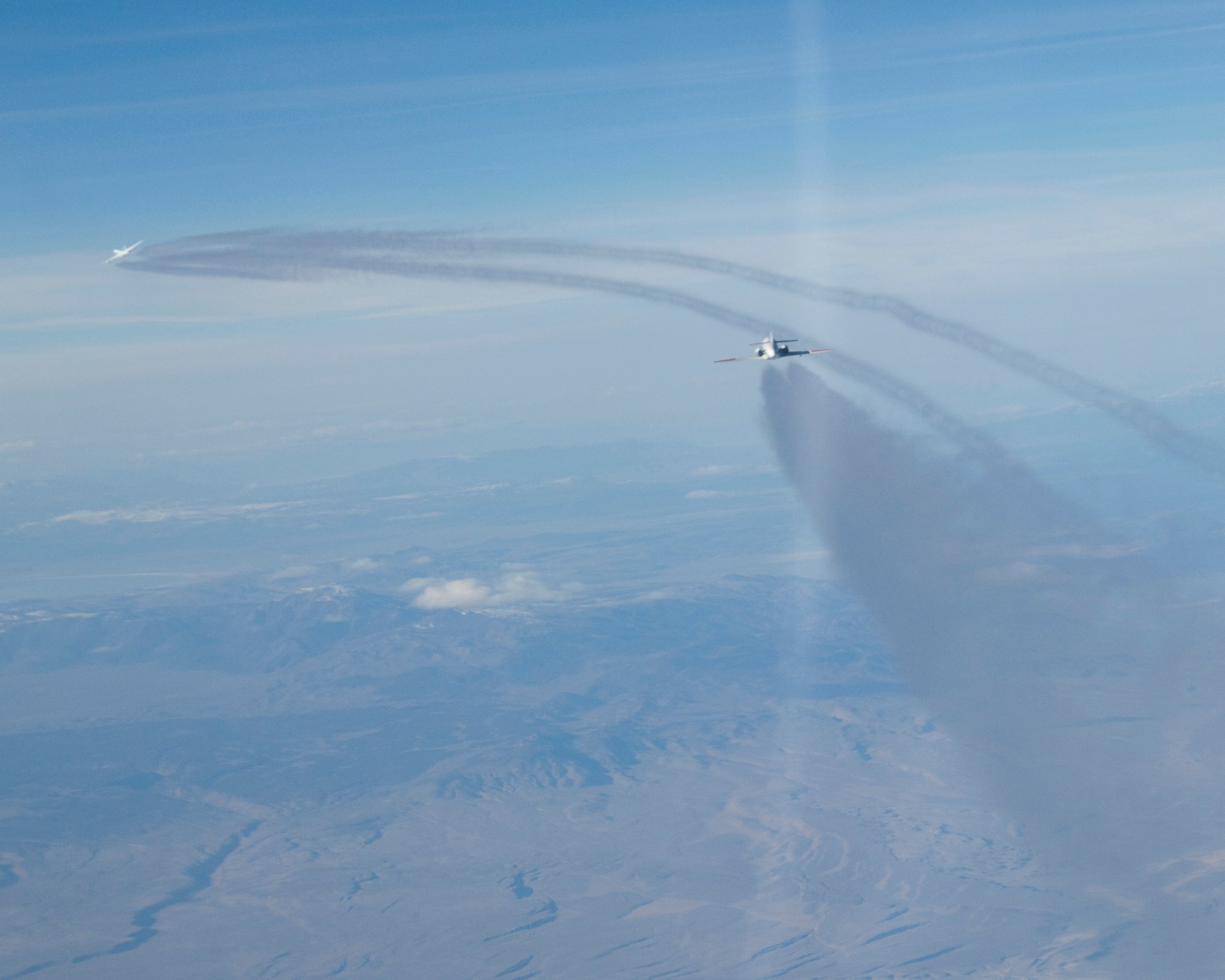
The Alternative Fuel Effects on Contrails and Cruise Emissions (ACCESS) flights were staged from NASA’s Dryden Aircraft Operations Facility in Palmdale, Calif., and mostly took place within restricted airspace high over Edwards Air Force Base, Calif.
ACCESS follows a pair of Alternative Aviation Fuel Experiment studies conducted in 2009 and 2011 in which ground-based instruments measured the DC-8’s exhaust emissions as the aircraft burned alternative fuels while remaining parked on the ramp at the Palmdale facility.
The idea behind ACCESS was to continue that research in the air, with the aim of this first phase of flights intended to learn the best ways to conduct the emissions sampling using the combination of the DC-8 and Falcon jets. A second phase, likely to take place later this year or in 2014, will focus on adding to the scientific research data obtained during the initial ACCESS experiment.
“Right now we are going through our data set. We are picking out individual exhaust plumes, analyzing the particle measurements, gas measurements and ice particle measurements,” Anderson said. “And we’ll have that data set for both the JP-8 and for the blended fuel.”
It’s too early to report any conclusive results from the tests, but a quick look at the data seems to indicate that the alternate fuel blend reduces black carbon emissions by more than 30 percent on the ground, with less obvious results in the air, including the alternate fuel’s effect on contrail formation.
“We don’t know if the emissions have any impact on ice particle formation. That’s something that will probably be buried in the statistics, and we’ll be examining that,” Anderson said.
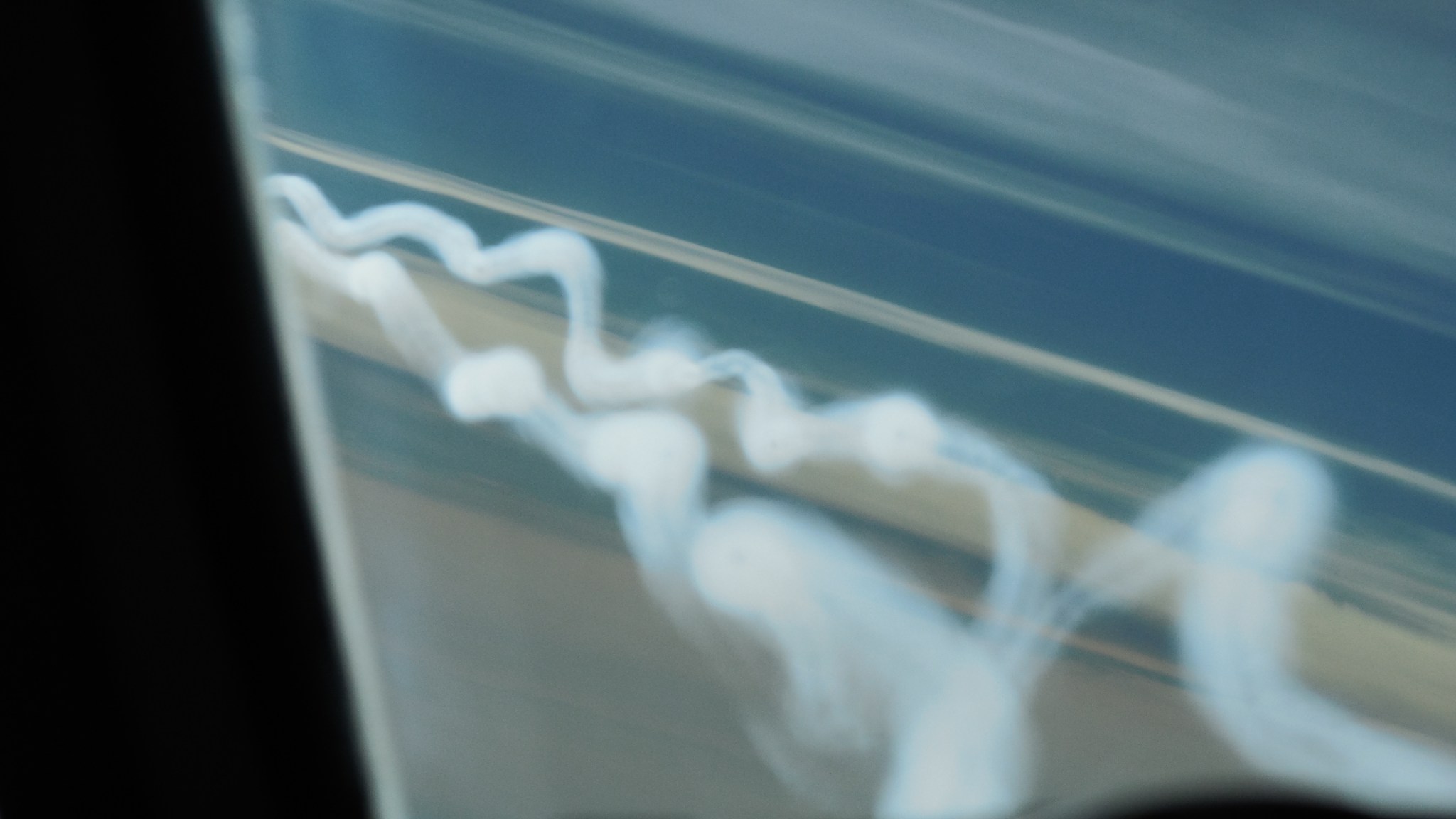
As researchers continue to pour over the scientific data and begin to prepare technical papers for public release, ACCESS’s project managers are already looking ahead and beginning to think about what the next phase will look like and when it might fly. “We would like to have more instruments,” Anderson said. “I think everything we had on the plane works well. I can’t think of anything I’d want to leave at home, but I’d like to carry more and that’s going to be difficult because we pretty much had this plane loaded to the gills.”
The ACCESS study is a joint project involving researchers at Dryden, Langley and NASA’s Glenn Research Center in Cleveland. The Fixed Wing Project within the Fundamental Aeronautics Program of NASA’s Aeronautics Research Mission Directorate manages ACCESS.



























